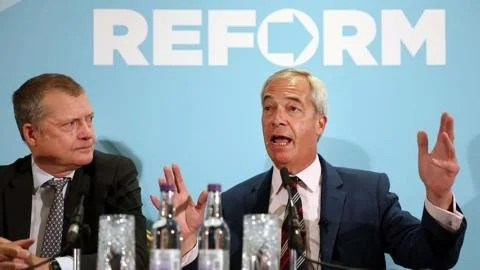A Right-Wing Uprising: Is Reform UK the Beginning of the End for Scottish Conservatives?
In a dramatic political landscape shift, Reform UK, led by Nigel Farage, is causing ripples in Scottish politics as the upcoming Holyrood election approaches. With Graham Simpson recently defecting from the Conservatives, plunging the party deeper into crisis, Farage’s assertion that the Scottish Conservatives may soon become irrelevant raises serious questions about their future.
Recent opinion polls show Reform consistently outpacing the Tories, including a significant victory in the Hamilton by-election, where they captured a staggering 26% of the vote compared to the Conservatives’ mere 6%. Surveys conducted by polling expert Prof Sir John Curtice indicate that Reform is not only a threat to the Conservatives but also to Labour’s chances in the upcoming election. With over a dozen Scottish Tory councillors switching allegiance to Reform, the exodus points to a growing discontent within the party ranks.
Facing such formidable challenges, Scottish Conservative leader Russell Findlay is under pressure to steer the party rightward to regain lost ground. His adoption of Reform’s stances, including opposition to net-zero initiatives and backing controversial asylum seeker protests, risks alienating the moderate voter base established under Ruth Davidson. Critics like Jamie Greene argue the party is veering towards a ’Trump-esque’ identity, while others lament the erosion of its small-c conservative values.
The defection of multiple MSPs to Reform underscores the potential fragmentation of the party, reminiscent of Labour’s decline post-2014 independence referendum. Tory insiders are strategizing in anticipation of the election, aware that regional lists could open the door for Reform to claim former Conservative seats, which could fall victim to a vote-splitting scenario.
While historical precedents showed Reform’s predecessors failing miserably in previous elections, the political climate now seems increasingly favorable for them. The 2025 election landscape promises an array of choices for voters amid a software of disenchanted sentiments post-Labour’s Westminster landslide. With seven parties vying for representation at Holyrood and the looming specter of Reform’s rise, the stakes for the Conservatives have never been higher, as they grapple with threats from within and outside their party structure.

